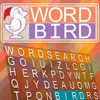Village News
Monuments at Mennonite Heritage Village
Mennonite Heritage Village has not always highlighted its monuments as it well might have. But in the light of the upcoming 225th anniversary of Mennonites moving to New Russia in 1788-89, they are gaining importance as story tellers about how the Russian Mennonite chapter began and in some aspects fared in the coming years.
Winter is on the way but there may be time yet to do one more outdoor self-guided tour to see these monuments before the snow flies. In a way almost every item and building you see on the grounds is a monument of some kind. But here the tour will deal with some which were directly part of our Russian experience.
The site guide or “tour” on our website will help you locate all the monuments and other spots on the grounds. A few notes here may help as well.
The Oak Tree(s)
Even before you get to the main street you will see a growing oak tree to your right. It sprang from an acorn brought over from the mother oak (now dying, it seems) in Zaporozhe, Ukraine. Be sure to read the interpretive panel for more details.
It is said to be the place in the community which the first families from Prussia called Chortitza gathered to thank God for a very tiring but safe trip from Danzig in northern Poland to this place. The old oak in Ukraine was growing there already in Cossack times, and was about 700-800 years old when the first Mennonite settlers arrived in 1789.
The Johann Bartsch Memorial
Instead of entering the street near the General store turn right and walk toward the sod hut (Semlin, also a monument). Here you will see the tall cairn built to pay tribute to a young man, Johan Bartsch who lived in Nobel near Danzig in northern Poland. He was asked to go with a fellow land scout, Jakob Hoeppner, to visit New Russia (just north of the Black Sea) to explore places for possible settlement.
The original monument was erected around 1890 in the village of Rosenthal in the Chortiza settlement, on the Dnieper River. It was purchased by the museum in Soviet times, and brought to Canada here on the village site, around 1969. You will find interesting information on the map (attached to a wall near the monument) of the route the men took as they travelled. They made that trip in 1786-87 and brought back an agreement of settlement terms signed by Tsarina Catherine the Great.
The Jakob Hoeppner Monument
From the Bartsch site we head east for a short stretch down the main street until we get to the church on your left. Behind it is the Jakob Hoeppner memorial to which are attached head stones of several family members. Again, be sure to read the interpretive panel for details. Hoeppner, living in Bohnsack near Danzig, was the partner of Bartsch for exploring New Russia, as noted.
He settled on a farm on the island of Chortiza as soon as he arrived there. Most of the early settlers refused to take up land for their farms for the first year because they were very unhappy about the hilly land given to them. The memorial, erected around 1890, was also purchased from the Ukrainian government and brought to Canada around 1973.
There is now a project underway to place some kind of memorial on the spots in Ukraine vacated when the Bartsch and Hoeppner ones were brought to Canada. Some Ukrainian authorities are ready to help with this.
The inscriptions on the Bartsch and Hoeppner memorials are in German and Russian, though weathering has erased some of the writing. English translations are available on the interpretive panels.
The Jakob and Wilhelmine Reimer headstone
This memorial is placed only a few feet away from the Hoeppner one. Its inscriptions are almost all in German. Some Reimer descendants discovered the headstone hidden on a farm not too far from Wiesenfeld in the general area of today’s Donetsk, Ukraine. The family brought it over to Canada and very recently unveiled it in its present location.
The Reimers had helped to found Wiesenfeld some years before the group known as Mennonite Brethren formed in South Russia around 1860. The Reimers were active in leading the new congregations. Two fine publications on the story of the Reimers and bringing the memorial to Canada are available in the museum bookstore.
The Berlin Wall Memorial
You will find this spot when you head south along the road past the windmill as far as the pond. It is a section of the Wall which Communist authorities built in Berlin after WWII ended to keep people in East Berlin from emigrating to West Berlin. It came down with the change in governments of the late 1980s. This portion was purchased in Germany by Mr. Martin Bergen of Winnipeg, after the wall came down, and donated to the museum. It recalls the story of thousands of Mennonites who fled the Soviet Union after WWII and sought then to get to West Germany and other countries in the search for new homes. Henry’s Red Sea is the book many people have read, telling the story of this movement of families, often difficult in the extreme.
The Victims of Violence memorial
This monument, erected here in the mid-1980s, is the final site of our series. You see it to your left as you leave the museum to get to the parking lot and go home. Be sure to read its inscriptions – in German and English, note the surrounding décor, and read the plaque as you did the others. The late Rev Gerhard Lohrenz and well-known film producer Otto Klassen were strong leaders for this project. It is dedicated to thousands of men, women and children who experienced violence in the turbulent years of their Russian/Soviet sojourn. God alone knows the exact number of persons that need to be numbered here. May they rest in peace!




